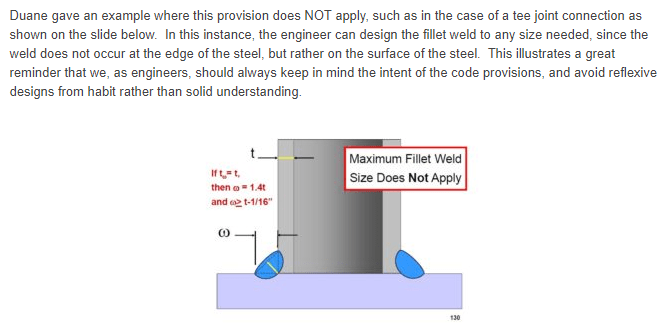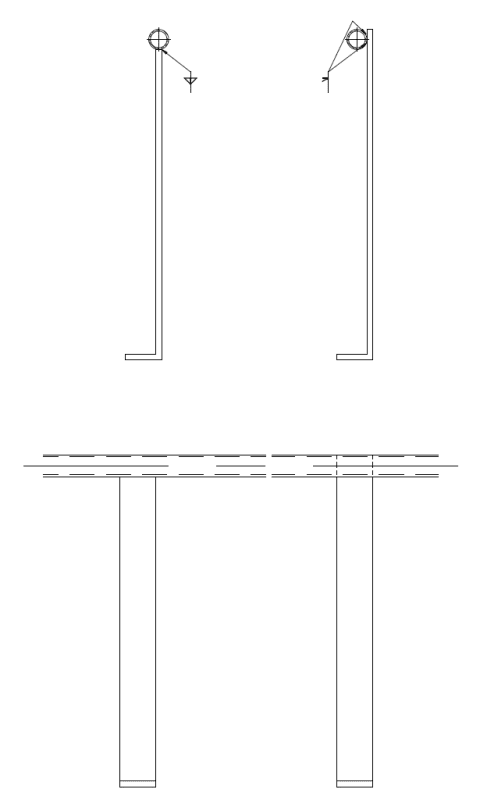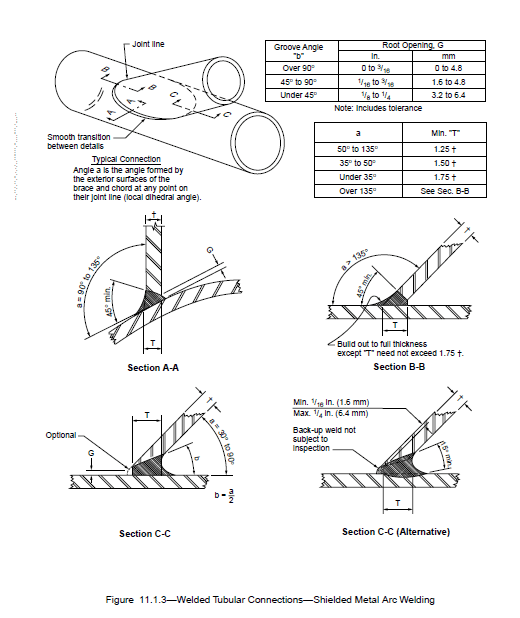Navigation
Install the app
How to install the app on iOS
Follow along with the video below to see how to install our site as a web app on your home screen.
Note: This feature may not be available in some browsers.
More options
Style variation
-
Congratulations TugboatEng on being selected by the Eng-Tips community for having the most helpful posts in the forums last week. Way to Go!
You are using an out of date browser. It may not display this or other websites correctly.
You should upgrade or use an alternative browser.
You should upgrade or use an alternative browser.
Welded Connection 5
- Thread starter dik
- Start date
- Status
- Not open for further replies.
-
1
- #2
Hi dik
This link might help
“Do not worry about your problems with mathematics, I assure you mine are far greater.” Albert Einstein
This link might help
“Do not worry about your problems with mathematics, I assure you mine are far greater.” Albert Einstein
- Thread starter
- #3
Thanks... already checked there... the issue is the connection to the relatively thin tube. I'm almost at the point of suggesting the vertical rails be changed from HSS to BAR stock. I can easlily calculate the forces in the flare bevel welds... just don't know how that plays out with the tubing again. Cannot find anything on the AISC, CIDECT, or Jeff Packer's book... The alternative is to cantilever the rail from the wall, not knowing what the backing is, yet.
Dik
Dik
-
1
- #4
MegaStructures
Structural
I'm just curious.. what is stopping you from using the generally recommended Blodgett's method of welds treated as a line? Is your difficulty in determining the weld throat / base material contribution due to the curved surface that is part of the weld?
-
1
- #5
dik said:... the issue is the connection to the relatively thin tube.

I think you need a good welding procedure though. Why not to check on Welding Forum.
- Thread starter
- #7
MegaStructures:
Problem is the thin tube strength... with a rectangular tube, I can use a small yield line solution. May be necessary to find a simpler connection.
HTURKAK: The issue isn't the weld itself, but the strength of the tube.
retired13: I'll try the welding forum later... most of the welders hang on structural... almost at the point of welding bar stock to bar stock... a lot simpler... not the way I like to do things.
If the client wants the condition... may do a small load test.
Dik
Problem is the thin tube strength... with a rectangular tube, I can use a small yield line solution. May be necessary to find a simpler connection.
HTURKAK: The issue isn't the weld itself, but the strength of the tube.
retired13: I'll try the welding forum later... most of the welders hang on structural... almost at the point of welding bar stock to bar stock... a lot simpler... not the way I like to do things.
If the client wants the condition... may do a small load test.
Dik
Hi dik
If you use the tube wall thickness and set it to be the maximum leg of the fillet weld, then I am struggling to understand your dilemma because fillet welds fail in shear across the throat of the weld, so that in my opinion would be the weakest point given that the weld electrode has similar strength properties to the steel tube.
“Do not worry about your problems with mathematics, I assure you mine are far greater.” Albert Einstein
If you use the tube wall thickness and set it to be the maximum leg of the fillet weld, then I am struggling to understand your dilemma because fillet welds fail in shear across the throat of the weld, so that in my opinion would be the weakest point given that the weld electrode has similar strength properties to the steel tube.
“Do not worry about your problems with mathematics, I assure you mine are far greater.” Albert Einstein
- Thread starter
- #10
Hi dik
What is it you are making? Handrail? and how is the joint loaded? I have read the posts but I don’t really know what you are making. I agree that welding thick and thin section materials isn’t ideal because you can get lots of distortion due to the heat input required.
“Do not worry about your problems with mathematics, I assure you mine are far greater.” Albert Einstein
What is it you are making? Handrail? and how is the joint loaded? I have read the posts but I don’t really know what you are making. I agree that welding thick and thin section materials isn’t ideal because you can get lots of distortion due to the heat input required.
“Do not worry about your problems with mathematics, I assure you mine are far greater.” Albert Einstein
- Thread starter
- #12
df: it's a exterior ladder that is over 2' from the wall to clear a projecting 'string course', and I cannot develop the moment at the wall so the tube has to take it... I think I will do it in BAR material... the HSS is a little more 'attractive'. I have a personal issue in that I like solving interesting problems, if I can, more than I like simple staightforward ones. I get bored and sometimes add complexity simply to make it interesting.
Dik
Dik
MegaStructures
Structural
I still don’t see why the base metal can’t be checked just like normal. Weld treated as a line and area is total line length*material thickness.
“Any idiot can build a bridge that stands, but it takes an engineer to build a bridge that barely stands.”
“Any idiot can build a bridge that stands, but it takes an engineer to build a bridge that barely stands.”
-
1
- #15
- Thread starter
- #17
- Thread starter
- #18
- Thread starter
- #20
- Status
- Not open for further replies.
Similar threads
- Question
- Replies
- 4
- Views
- 13K
- Question
- Replies
- 2
- Views
- 15K
- Replies
- 8
- Views
- 13K
- Question
- Replies
- 7
- Views
- 8K
- Replies
- 7
- Views
- 12K


